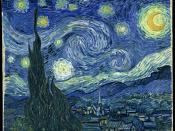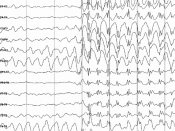Epilepsy is a neurological condition--that is, a condition affecting the nervous system. Epilepsy is also known as a seizure disorder. It is usually diagnosed after a person has had at least two seizures that were not caused by some known medical condition like alcohol withdrawal or extremely low blood sugar. The seizures in epilepsy may be related to a brain injury or a family tendency, but usually the cause is unknown. The word "epilepsy" does not indicate anything about the cause of the person's seizures, what type they are, or how severe they are. Usually there is a fine balance in the brain between factors that begin electrical activity and factors that restrict it, and there are systems that limit its spread. During a seizure, these limits break down, and abnormal electrical discharges can occur and spread to whole groups of neighboring cells at once. This linkage of electrical discharges creates a "storm" of electrical activity in the brain.
This is a seizure. When a person has had at least two of these seizures, then that is called epilepsy.1 @ @
In the case of Vincent van Gogh, there are every reasons showing that he was suffered from a focal epilepsy accompanied by simple focal and complex focal seizures. It is regarded as a symptomatic type of epilepsy. A difficult, protracted birth, pronouncedly abnormal behavior in childhood but normal intelligence, and focal and possibly also secondary generalized epileptic seizures pointing to the temporal region as the focus of the epileptic activity: these mosaic stones fit together to make a picture of a residual epilepsy after cerebral damage caused in early infancy. It is suggested that perhaps there was a genetic tendency to epilepsy in the family: there are indications that van Gogh's mother's sister, his brother Theo, and...


